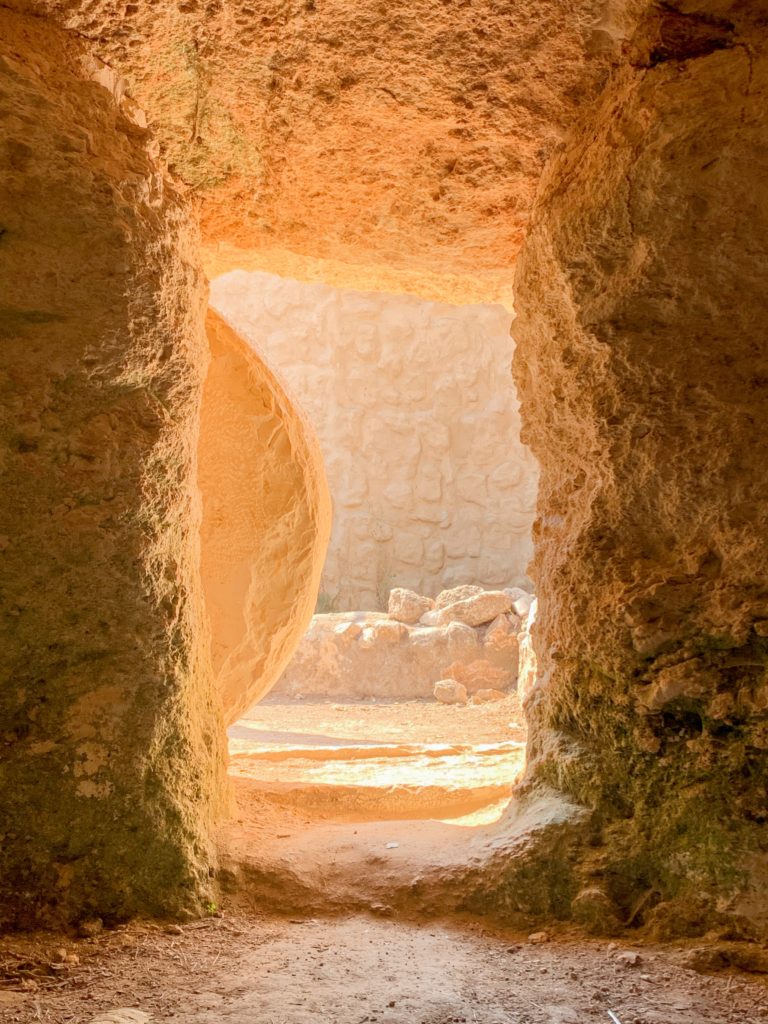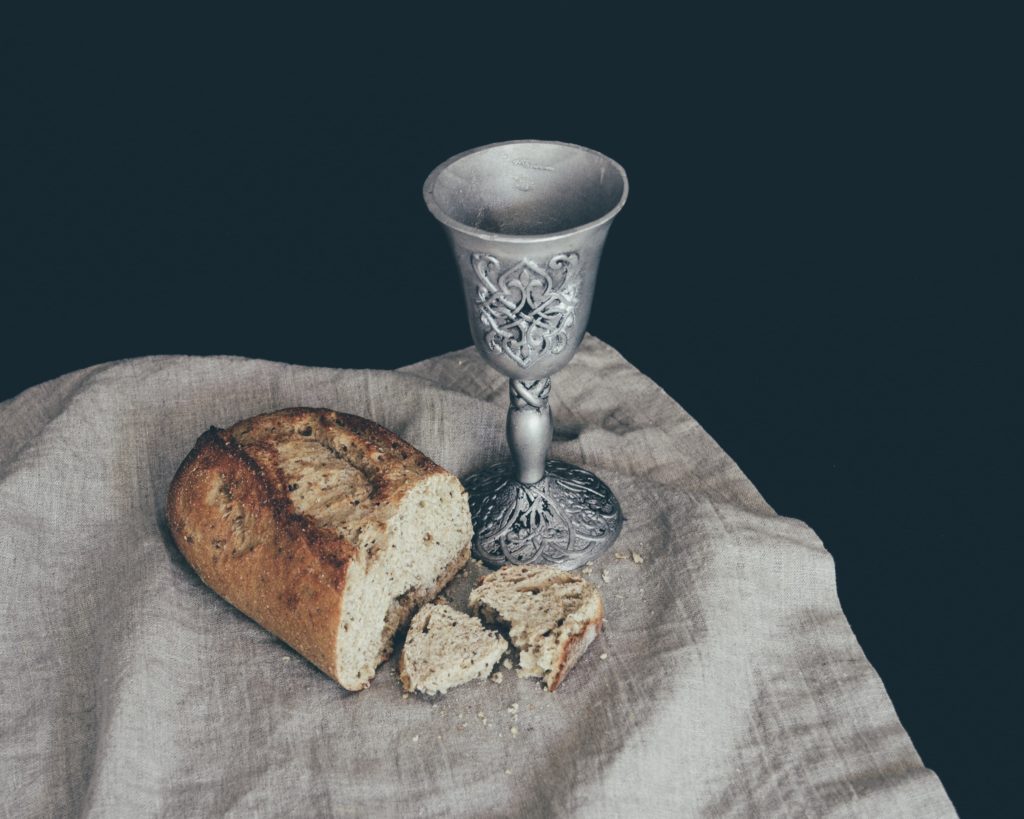Back to Basics for Easter
Maybe it happens every year for Easter, but I don’t notice it. Or maybe not. I am moved this year by articles in my usual sources that bring to life the way I understand the liturgical and theological basics of our celebrations.

Daniel O’Hanlon’s was the second article I read (the first, by Mary E. Hunt, I’ll expound on at the end), and it started me thinking. Republished in America from 1962, O’Hanlon is hard on Christmas and the crucifixion, but he expresses the joy in the Resurrection that was preached at that moment in history and continues to affect me. The sacraments of Baptism and the Eucharist bring the Christian community into the experience of Resurrection and then out into the world to share it. He recovers for me the belief of the early church as found in the art in the catacombs, an unforgettable experience for this claustrophobic participant in the tours arranged by FutureChurch. It’s all about emergence from the tomb. That joy is what I celebrate at Easter.
O’Hanlon, who died in 1992, is a little less ecumenical than Pope Francis, for one example; his article reflects that time. Most fascinating to me is that he argues that the Resurrection remained more central to Eastern Christianity. He asks, “Could it be that communism’s great reservoir of energy is the dynamic Easter faith of the great Russian people, distorted and misdirected?” Ponder that as you pray for peace in Ukraine.
Rita Ferrone in Commonweal uses early English stone baptismal fonts to illustrate her article. It’s remarkably similar in situating Baptism and Eucharist in church history, as well as in architecture. Post-Vatican II liturgical reform moved the font in her childhood parish church from a closet to the center aisle to emphasize the connection between those two sacraments. She emphasizes another connection, however: baptismal priesthood. “As the ordained or ministerial priesthood began to be explained in the twelfth century by a theology of powers conveyed by Holy Orders, and belonging to the priest alone, the earlier ecclesiology of communion, which was a baptismal ecclesiology, went into eclipse.” As she explains it, all Christians become “other Christs” to offer ourselves “so as to bear Christ’s light and life to others.” She quotes Augustine:
“We call everyone priests because all are members of only one priesthood.”
I especially like that.

Thomas Reese in NCR goes even further back in the history he presents. The form of the Eucharistic liturgy takes place during the transition from the Jewish community to the first Christians. They were “kicked out” of the synagogue but retained the form of the scripture service, and they added communion inspired by the Last Supper. Reese’s homage to Vatican II notes how few scripture passages used to be read in the liturgy. Because of the number of women saints, we heard a lot of the wise and foolish virgins at daily mass. He does not make explicit how this reveals the limits of the patriarchal imagination about the power and impact of women, so I do, but that’s beside my main point. I find in Reese’s article the same joyous Christian mission in the part of the Eucharistic liturgy that is the service of the Word.
“The Scriptures call us to do a lot of things other than confess our sins. It especially calls us to follow the example of Christ in living lives of justice, healing and love.”
He’ll be considering the communion part of the liturgy next week, so this article is incomplete for my purpose of examining the Easter implications of the sacrament of Eucharist, however.
Even Michael Sean Winters, also in NCR, hits on some of the themes that appeal to me as he considers all of Holy Week. He just includes more from the intervening millennia. He reminds us that it was Pope Pius XII in 1951 who restored the Easter Vigil, that most dramatic of liturgical events.
“Arguably, it was this decision of Pius that really focused the church on the centrality of baptism and the priesthood of all believers.”
One of the fondest memories of my childhood parish is going as a teenager to that midnight service with my father. The mystery of light in the darkness, the chanted “Lumen Christi.”
For this blog, the first article I read is by Mary E. Hunt and it may seem to you that it is not of a piece with all this Easter joy. It is a lamentation, mourning that the effort put into convincing a “recalcitrant” Church to ordain women could be put to uses that are so much better. Yet together she and I hold the truth that we are an Easter people, all of us, baptized into Christ and missioned into Jesus by our willing communion. Look at the links Hunt generously provides to the two eponymous organizations of Roman Catholic women priests: joy abounds.
Hunt says:
“People are lied to when they are told that the church cannot ordain women because of some God-given reason.”
Our work for ordination has not been for a ritual recognition or a place in some hierarchical order, but to extend an experience of grace to all. During my time in WOC’s leadership I often misquoted Chairman Mao: “Let a hundred flowers bloom; let a hundred schools of thought contend.” He used this poem for about two years and then shut down inquiry. Rather, with WOC an infinite variety of priestly ministries continue to emerge, exercised by an infinite variety of people.
Another one of the favorite slogans in the early days after Vatican II was “the glorious freedom of the sons of God.” Think of how far we have come. I rejoice in the priestly mission of all the baptized, whether ordained or not, women or men or neither or both.
We live in the glorious freedom of an Easter people.

5 Responses
Splendid Easter message, dear Regina. An Easter people, together, onward!
Happy Easter
Thank you for your glorious focus on baptism and resurrection and examples of those writers who so wisely reflect on the freedom and inclusion given to all. I love your emphasis on all the expansions of ministry we all-gendered or no-gendered “priestly people” have engendered and encountered in our own day. I rejoice with you this Easter and always!
Excellent, expansive vision.
Thank you.
Joanne Bray
Thanks, Regina. You capture so well the spirit of the season and the imperative to keep expanding the reach of an Easter people. May it be so this year and moving forward.